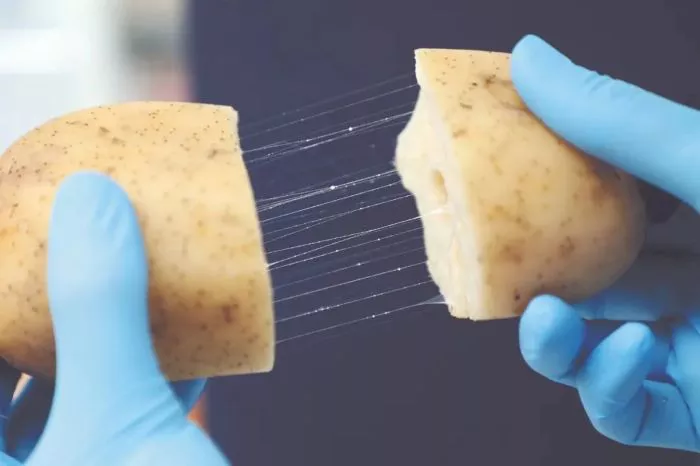Scientists from The Hong Kong University of Science and Technology (Guangzhou) have unlocked the remarkable biomedical potential of lotus roots, transforming the common vegetable into a high-performance material for bone regeneration. Associate Professor Wu Jun and his team have developed a breakthrough processing method that enhances the natural porous structure of lotus roots, creating biodegradable scaffolds with strength comparable to human bone. This innovative approach addresses critical limitations of conventional bone cement by promoting vascularization and tissue growth while minimizing inflammatory responses.
The research reveals how lotus roots’ unique microstructure – featuring continuous pore channels visible to the naked eye – provides an ideal environment for bone regeneration. Through freeze-drying and mineralization treatments, the team preserves this natural architecture while boosting mechanical properties. Animal studies demonstrate accelerated healing, with lotus root implants supporting new blood vessel and nerve growth while gradually degrading in sync with bone recovery. The material’s exceptional biocompatibility and customizable three-dimensional forms offer significant advantages over current synthetic alternatives.
Beyond orthopedics, Professor Wu’s team is pioneering applications for wound care, developing ultra-thin lotus root membranes that may revolutionize dressing technology. As the research progresses to large animal trials using sheep models, this sustainable biomaterial approach could transform treatment for critical bone defects and complex wounds. The lotus root’s transition from kitchen staple to medical marvel exemplifies how nature-inspired solutions may address some of healthcare’s most persistent challenges.
Related Topic:
- Michelin-Starred Chef Ugo Rinaldo Hosts Tea-Inspired Countryside Dinner in Zhejiang
- Spice Odyssey: How ‘Once Upon a Bite’ Brings Culinary History to Life
- Cross-Border Tourism Disrupted as Thailand-Cambodia Border Tensions Escalate

